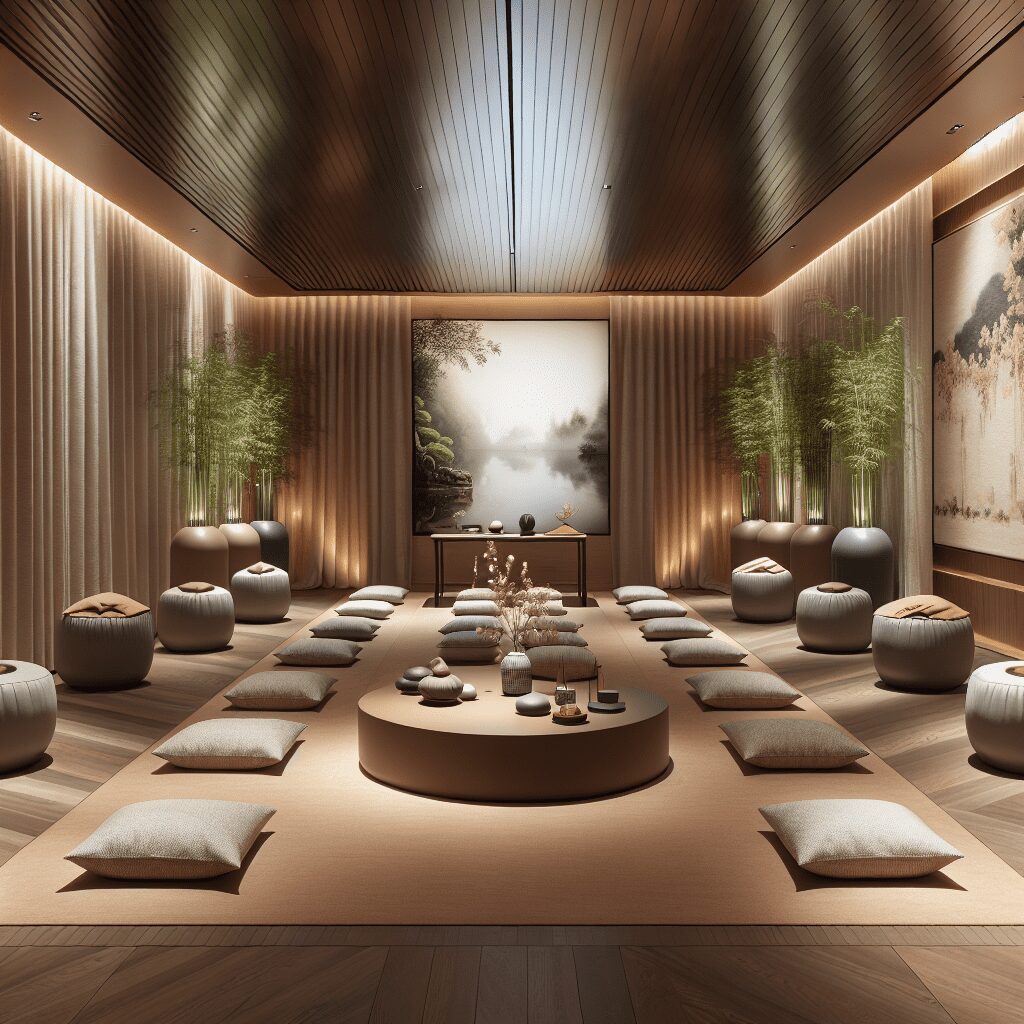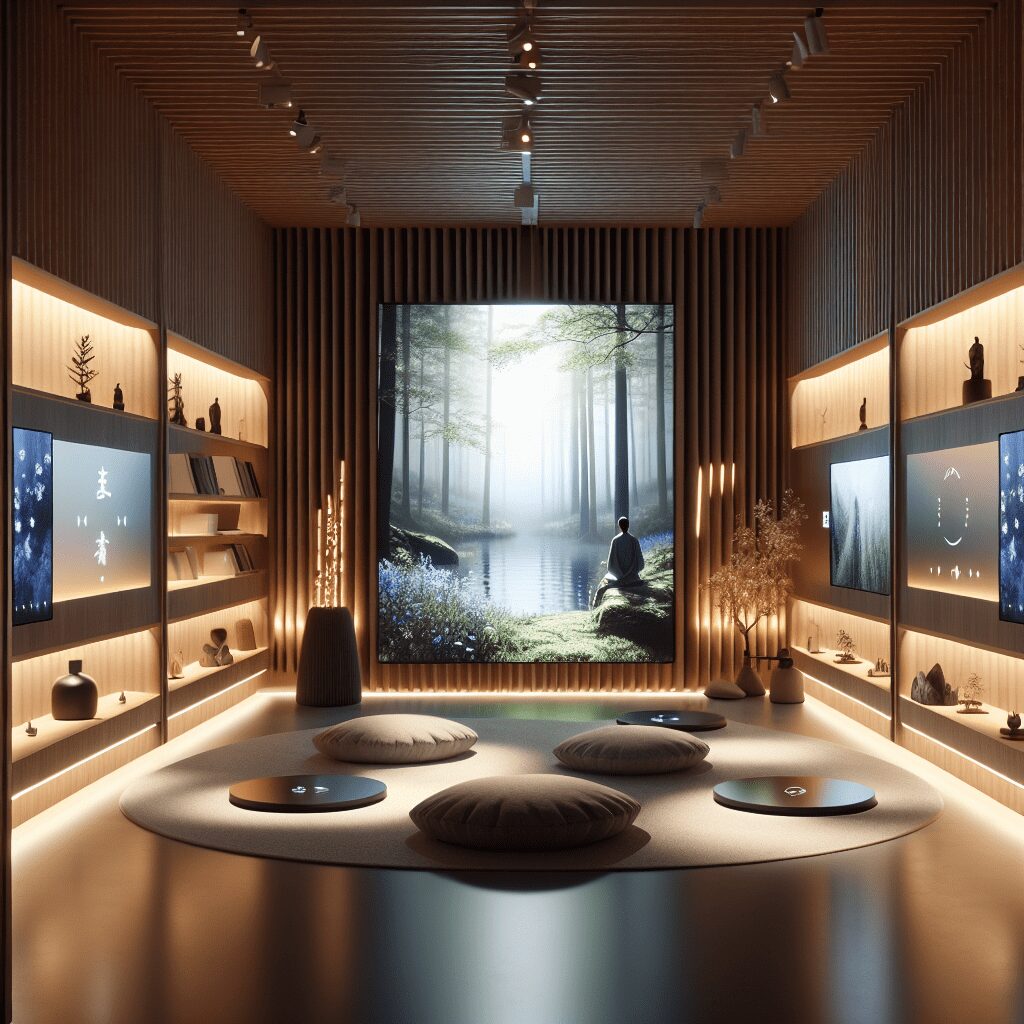
Prioritize your mental well-being daily. Enhance your life by nurturing your mental health with the Smart Meditation app. Break free from stress, alleviate anxiety, and enhance your sleep quality starting today.
What Is Zendo In Meditation?
Unraveling the Mystery of Zendo: A Gateway to Zen Meditation
In a world constantly buzzing with noise, finding serenity can seem like searching for a needle in a haystack. Yet, there’s a haven of tranquility that has stood the test of time, inviting individuals to immerse in the peaceful embrace of mindfulness and introspection. This sanctuary, known as Zendo, serves as the backbone of Zen meditation practices, offering a unique pathway to inner peace and enlightenment.
The Essence of Zendo: More Than Just a Meditation Space
At its core, Zendo is a physical setting dedicated to Zen meditation, a practice deeply rooted in Buddhist traditions. The word itself, “Zen,” translates to a state of concentration or meditation, and “Do” means a place or hall in Japanese. Therefore, Zendo, also termed as “Zen Hall,” is essentially a meditation hall where individuals gather to practice Zen meditation. However, to confine Zendo to its physical attributes alone would be an oversight of its profound significance in the journey of self-discovery and enlightenment.
Zendo isn’t merely about the four walls within which practitioners sit in silence. It embodies a set of principles, rituals, and routines that guide an individual through the intricate paths of Zen meditation. It’s a realm where the chaos of the external world fades into oblivion, allowing one to confront and harmonize with their innermost thoughts and emotions.
Key Components of Zendo: Zafu and Zabuton: The traditional sitting cushions that provide comfort during lengthy periods of meditation. Kinhin: The practice of walking meditation that interlaces periods of sitting meditation, aiding in maintaining mindfulness and circulation. The Gassho: A gesture of respect and gratitude, performed by placing the palms together in front of the heart.
Stepping Into Zendo: A Journey Toward Enlightenment
Entering a Zendo, one leaves behind the superficialities of the mundane world, embarking on a profound journey inward. The experience within a Zendo is rooted in silence, punctuated only by the occasional sound of a bell that marks the beginning and end of meditation sessions. The atmosphere is one of collective solitude, where each individual, though part of a larger group, is engrossed in their personal quest for insight and understanding.
It’s a mistake to assume you need to be a seasoned meditator or a Buddhist to engage in Zendo meditation. On the contrary, Zendos are open to anyone with a genuine desire to explore the depths of their consciousness. Newcomers are often given a brief orientation, introducing them to the basics of Zen meditation, the correct posture, and the etiquette to be maintained within the Zendo.
The practice of meditation in a Zendo hinges on the principle of “just sitting” or Shikantaza. This involves sitting in a posture that promotes alertness and allows for smooth breathing, with the aim of clearing the mind and being entirely present in the moment. It’s a deceptively simple practice; the challenge lies in maintaining focus and warding off the distractions that constantly besiege our minds.
Final Thoughts: The Transformative Power of Zendo Meditation
Embarking on the Zendo meditation journey might seem daunting at first, with its stark simplicity and the challenge of confronting one’s incessant stream of thoughts. Yet, it’s precisely through this simplicity that Zendo offers a powerful medium for transformation. Regular practitioners often report a profound sense of calm, increased focus, and a deeper understanding of themselves and the world around them.
Whether you’re a novice curious about meditation or someone seeking to deepen their practice, stepping into a Zendo could mark the beginning of an enlightening journey. It’s a testament to the fact that in our relentless quest for peace and clarity, sometimes, the answers lie not in the external world, but in the stillness within us.





